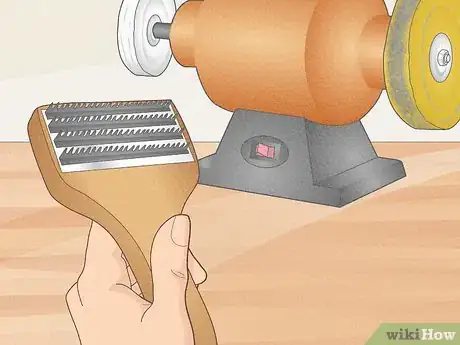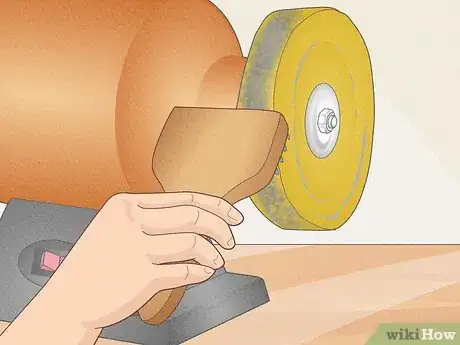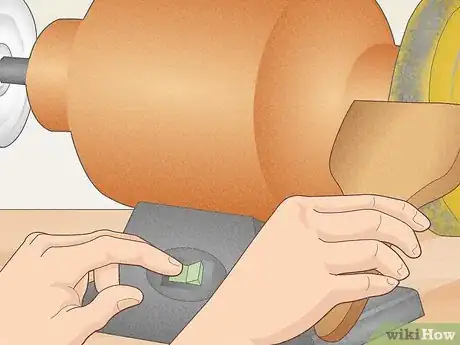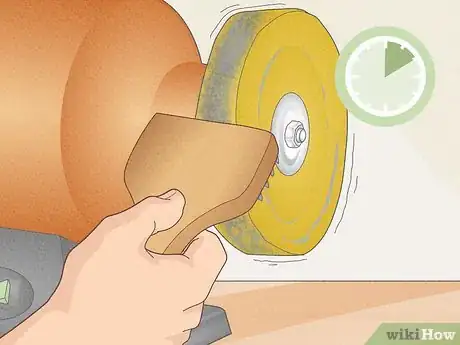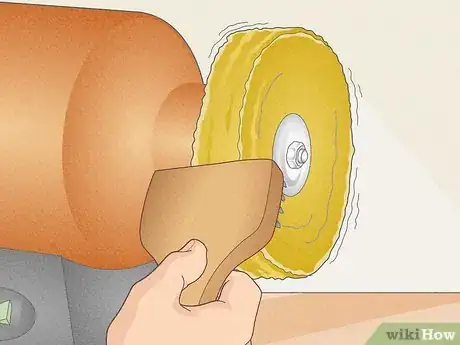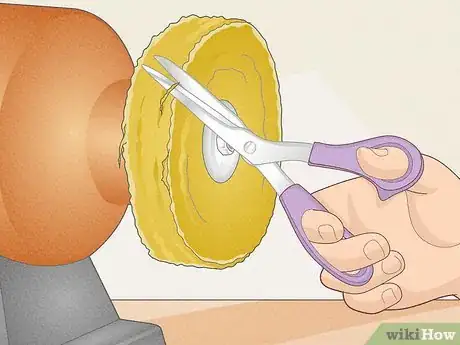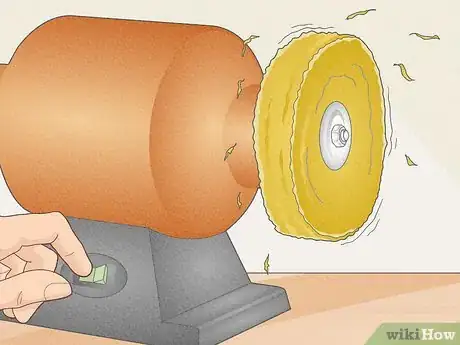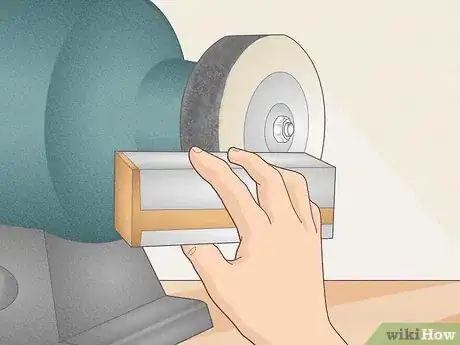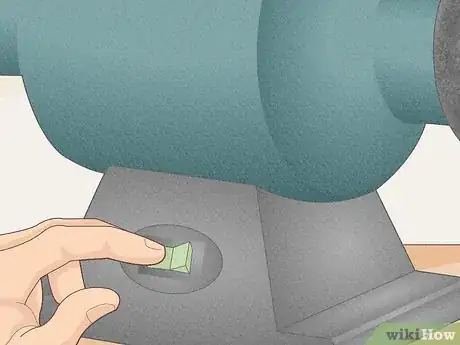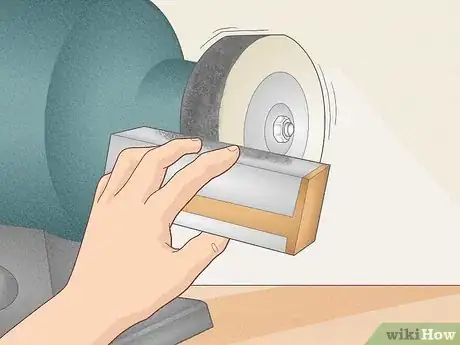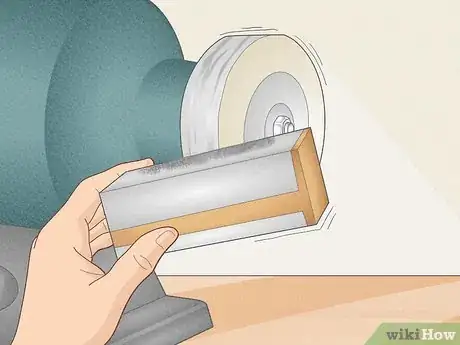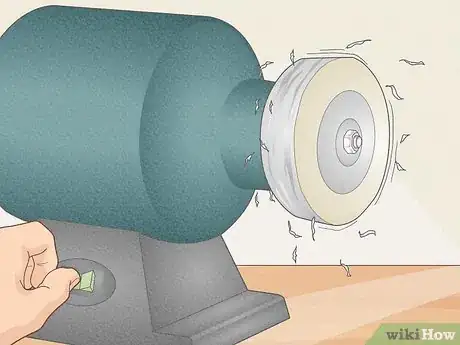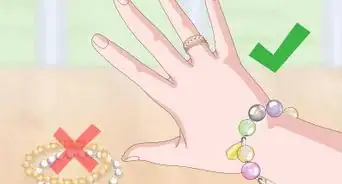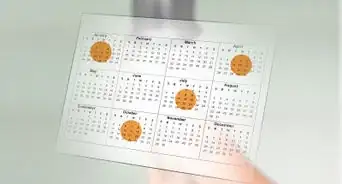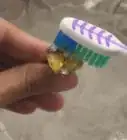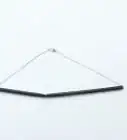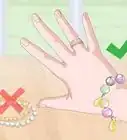This article was co-authored by wikiHow Staff. Our trained team of editors and researchers validate articles for accuracy and comprehensiveness. wikiHow's Content Management Team carefully monitors the work from our editorial staff to ensure that each article is backed by trusted research and meets our high quality standards.
There are 10 references cited in this article, which can be found at the bottom of the page.
This article has been viewed 14,919 times.
Learn more...
If you use a buffing wheel to polish jewelry, watches, hubcaps, knives, or wood, then polishing compound and dirt can build up on it over time. This build-up can actually damage the pieces you’re working on. Luckily, cleaning a buffing wheel is a quick process. The best way to clean your buffing wheel depends on whether you use it for jewelry and fine metals or wood and hard metals. Put on goggles and a dust mask to protect yourself, then get started with the cleaning.[1]
Steps
Maintaining Jewelry Wheels
-
1Get a wheel rake designed to clean buffing wheels. A wheel rake is a tool specifically designed to clean and maintain buffing wheels. It looks like a thick hairbrush with metal teeth. They come in different sizes, so get one that matches the width of your buffing wheel.[2]
- This is a specialized item, so they're probably easier to find online than in a store.
- Many buffing wheel manufacturers also produce their own rakes, so check with the company that made your buffing wheel if you don’t know where to start.
- Wheel rakes range from about $15-40.
-
2Hold the wheel rake in the work area of the wheel. The wheel’s work zone is the lower front quadrant. Imagine a line coming straight out of the wheel’s center towards you, and another coming out towards the floor. Line up the wheel rake in this section, without pressing it against the wheel yet.[3]Advertisement
-
3Power on the wheel. Use the same speed that you would use for buffing. Make sure you don’t press the rake against the wheel yet. Let the wheel gain speed first.[4]
- Always check the user manual for your buffing wheel to confirm the correct speed. Different products might require a different speed for cleaning.
-
4Press the rake against the wheel in 10-second increments. When the wheel reaches top speed, lightly press the rake into it. Hold the rake in position for about 10 seconds at a time and release. Wait a few seconds, then press the rake back into the wheel. Continue this pattern to grind away dirt and grime on the wheel.[5]
- If the surface of the wheel isn’t even, press the rake against the outermost section. Then you can gradually grind that down to make it even with the lower sections.
- If you have trouble holding the rake against the wheel, try bracing your forearms against the table that the wheel is on. This gives you a better foundation to hold the rake with.
-
5Continue grinding until the wheel is soft and the fibers separate easily. Dirty buffing wheels are usually caked with polishing compound, which makes the wheel fibers stick together. Grind this all away so the wheel surface is soft and the fiber sections separate easily. Stop the wheel periodically and run your fingers across the wheel to check your progress.[6]
- Depending on how dirty the wheel is, the cleaning could take 1-5 minutes.
- The wheel will also lighten as you grind away the polishing compound. Don’t be surprised if it’s still black or gray in places, though. The fibers are probably stained, but this doesn’t mean that the wheel is still dirty.
-
6Snip any excess fibers along the wheel. The cleaning process could leave some fibers sticking up along the wheel surface, which could scratch fine metals. Take a pair of scissors and snip off any fibers you see sticking out.[7]
- Check especially along the edges of the wheel. The fibers here typically fray during the cleaning process.
-
7Spin the wheel to shake off any loose fibers. After snipping off excess fibers, spin the wheel once more at its normal speed. This should shake off any loose fibers that you cut.[8]
- If the wheel still looks like it has some loose fibers on it, try running it at a fast speed instead.
Sanding Heavy-Duty Wheels
-
1Line up a piece of coarse-grit sandpaper with the wheel’s work zone. You can either attach a strip of sandpaper to a piece of wood backing or use a sanding belt. Hold the sandpaper near the work zone, or lower-front quadrant, without pressing it against the wheel yet.[9]
- The wheel's work zone is its lower front quadrant. If the wheel were divided in half with a straight line coming out of the center towards you, the work zone is the area beneath the line.
- Sanding belts are easily available online or from hardware stores. Support the belt under your arm and fold it into an edge to hold against the wheel.
-
2Power on the wheel. Set the wheel to the same speed you would use for buffing. Let it gain speed before pressing the sandpaper against it.[10]
- Always check your buffer’s instruction manual for the correct cleaning speed. In most cases, you would use the normal buffing speed, but some products may be different.
-
3Scrape the sandpaper back and forth against the wheel. When the wheel reaches top speed, gently press the sandpaper into the work zone. Move back and forth across the wheel to grind away the excess polishing compound and dirt.[11]
- Change sandpaper sections if the piece you’re using gets too covered in dirt.
-
4Grind the wheel until all the compound buildup is gone. Continue scraping the sandpaper against the wheel and stop periodically to check your progress. The wheel exterior should be soft and the fibers should separate easily. When you’ve reached that point, then your wheel is clean.[12]
- Don’t over-sand your wheel after it’s clean. You’ll grind away the wheel and it won’t last as long.
- The whole cleaning process should only take about 2 minutes, and probably less.
-
5Spin the wheel one last time to get rid of excess fibers and dust. Dust and fibers could settle on the wheel during the cleaning process, so give it a final spin at top speed. Stop the wheel after 5-10 seconds and the cleaning is complete.[13]
Things You’ll Need
Maintaining Jewelry Wheels
- Wheel rake
- Goggles
- Dust mask
- Scissors
Sanding Heavy-Duty Wheels
- Coarse-grit sandpaper or sanding belt
- Goggles
- Dust mask
Warnings
- Do not use sandpaper on a wheel used for buffing jewelry and fine metals. The sandpaper could leave behind fine residue that could cause scratches.⧼thumbs_response⧽
- Always wear goggles and a dust mask when cleaning the wheel. Dust and dirt can get into your eyes and throat without protection.⧼thumbs_response⧽
- Keep your hands on either side of the wheel while you're cleaning it, not directly behind it. That way, if you slip, the wheel won't catch your fingers.⧼thumbs_response⧽
- Only clean your buffing wheel when it’s very dirty and shows compound buildup. If you clean it too often, you’ll grind away the whole wheel before too long.[15]⧼thumbs_response⧽
References
- ↑ https://www.eastwood.com/images/pdf/13143_instructions.pdf
- ↑ https://www.eastwood.com/images/pdf/13143_instructions.pdf
- ↑ https://www.eastwood.com/images/pdf/13143_instructions.pdf
- ↑ https://youtu.be/2jnJe2jANms?t=2179
- ↑ https://www.eastwood.com/images/pdf/13143_instructions.pdf
- ↑ https://youtu.be/2jnJe2jANms?t=2478
- ↑ https://youtu.be/2jnJe2jANms?t=2582
- ↑ https://youtu.be/2jnJe2jANms?t=2648
- ↑ https://bealltool.com/pdfs/woodbuff.pdf
